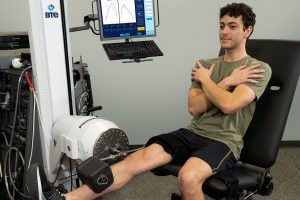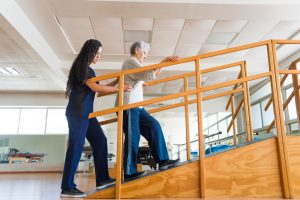
Are Your Summer Shoes Causing Lower Extremity Injuries?
Treatment GuidelinesMany wonderful things happen during the summer time. Vacations, family walks, outside time with the dog(s) all can be ways that we enjoy our summer days and nights. But this is also a time that people can experience a spike in lower extremity and even lower spine injuries. One of the potential causes? You guessed it, flip-flops! These open toed contraptions provide a welcome relief of air and vitamin D to a part of the body that rarely sees the light of day for most months of the year. They are cheap, convenient, and to some, they are stylish. However, the lack of arch support can contribute to many types of lower extremity injuries. This occurs mostly because of a change in timing and biomechanics of our natural gait pattern.
Many people tend to take for granted the strength of the three arches on the bottom of the foot that help to support the entire body. A subtle change to the support of these arches can have reaching consequences all the way up to the spine, causing more than just lower extremity injuries. As the arch becomes weakened or fatigued, we even run the risk of encountering ankle sprains, knee pain, and pelvis misalignments (1).
Much research is ongoing looking at the effects of flip-flops (or “thongs”) on the foot and it’s connection to lower extremity injuries. A quick internet search revealed over 470,000 hits for “dangers of wearing flip-flops.” One such study to discuss is compares ground reaction forces, center of pressure, and lower extremity joint kinematic and kinetic variables during walking (2). This study compared difference between flip-flops, sandals, and barefoot walking in comparison to running shoes. The results revealed that there are distinct differences and that there are increased loading rates in open-toe footwear. This and barefoot gait reduces plantar flexion motion in the early stance phase. This loss of PF leads to changes up the kinetic chain, next affecting the ankle. All these changes can result in added stress to already weak and unbalanced areas of the body.
There are flip-flops available that provide better support throughout the entire lower foot (3). If one must wear this type of footwear, a little homework and shopping can reveal a better surface that will reduce the risk of injury. There are also exercises available that can work to repair those weakened and damaged muscles caused by wearing non-supportive flip flops (4).
If you are one of those that insists on wearing open toed shoes, first consider several factors. First, if you will be walking long distances, have a change of footwear available to provide periodic relief. Or better yet, consider not wearing flip flops at all. Second, the more you wear flip-flops, the more preventative maintenance and repair you will need to minimize the risk of long term injuries. More stretching of the entire lower extremity as well as more strengthening will be needed. And finally, remember that everything starts with the foot. If you are in pain because of plantar fasciitis, lower extremity tendonitis, or a lacerated big toe as a result of wearing flip flops, your day(s) in the sun may be affected. The feet are extremely important to your overall health!
(1) http://www.fox5dc.com/health/144171970-story
(2) https://jfootankleres.biomedcentral.com/articles/10.1186/1757-1146-6-45
(3) https://secure.yoursole.com/us/mens/footwear/cork-flips/color_Forge/





